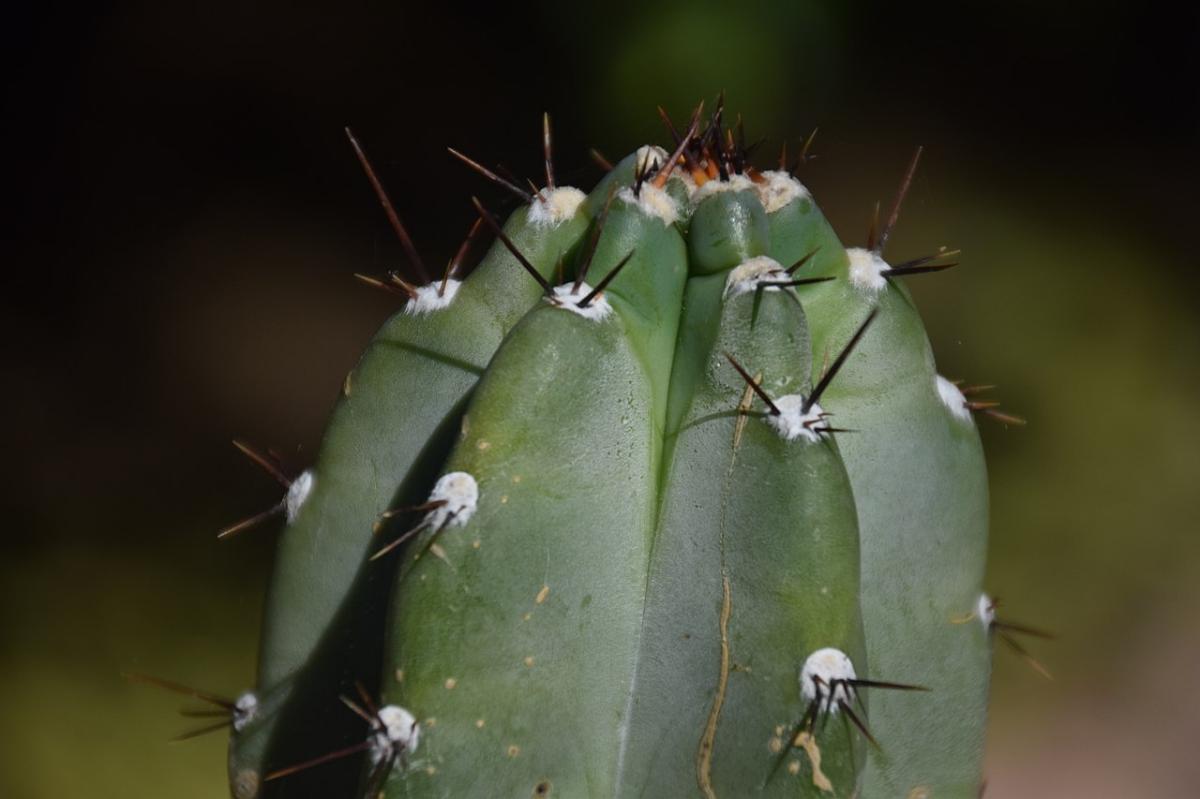
Cereus peruvianus f monstrous
El Cereus peruvianus It is a columnar cactus that has a lot and indoors, but it is actually better to have in an area where there is more light. It has a slow growth rate but not too much, to the point that in a year it can grow from 30 to 50 centimeters longer if the right conditions are given, so it is interesting to grow it in a large pot or, better, in soil.
It is not a demanding type of cactus, but you have to try not to water it too much since it is a plant that excess water would cause irreversible damage.
Origin and characteristics of Cereus peruvianus

Image - Wikimedia / Serge Melki
El Cereus peruvianus, Also known as Cereus repandus o Cereus uruguyanus, it is a columnar plant that can measure up to 12 meters in height. It develops succulent bluish-green stems, which are cylindrical and branch at the top. These have between 5 and 8 wide ribs, with areoles from which very short white hairs sprout and small gray spines up to 5 centimeters in size.
The flowers only appear in the specimens that have already reached a large size. They are white tinged with green, and are about 15 centimeters long. They appear in summer, and are nocturnal, which means that they open at dusk.
To produce fruit, there needs to be another specimen. If there is and there is cross-pollination, after about 40 days, which is what it takes more or less to mature, we will see that the fruits are red, lack spines and measure between 2 and 5 centimeters in diameter. The pulp is edible, white and contains the seeds, which can also be eaten in the next 24 hours.
In popular language it is known as the Peruvian apple cactus, hedge cactus, candelabra cactus, Peruvian tree, and even computer cactus since it believed that it absorbed the radiation emitted by the computer. And it is originally from South America, specifically the Western Caribbean.
Caring for the Cereus peruvianus
If you would like to know how to take care of the Cereus peruvianus, then the first and most important thing you have to know is that, although it is going to be a very large plant, avoid making the mistake of planting it in a large pot from a young age, since if it is done we risk losing it due to excess humidity.
And having said that, let's see in detail what care we have to provide to make it last ...
Location
It is a cactus that must be exposed to sunlight, but only if it is acclimatized. It is a mistake to put a plant in direct light if it has been in shade until now, as it burns quickly. For this reason, it is necessary to put it in semi-shade first, and then gradually get used to direct light.
If it is to be grown indoors, it is advisable to place it in a room where there is a lot of light as well, but not right in front of the window.
Earth

Image - Wikimedia / Krzysztof Golik
- Flower pot: if you are going to have your Cereus peruvianus in a pot, you have to make sure that the container has holes in the base. As a substrate, use cactus soil, or mix peat with perlite (for sale here) at 50%.
- Garden: the soil must have good drainage. If it is heavy and has a tendency to compact a lot, make a hole of about 50 x 50 centimeters and fill it with pumice (for sale here).
Irrigation
You have to let the land dry between waterings. It is a cactus that does not support waterlogging, so if you have doubts, check the humidity of the substrate before watering.
Use rainwater whenever possible, or bottled water.
Subscriber
It is advisable to fertilize it with a fertilizer for cacti, once a week or every 15 days depending on what the product packaging indicates. The ideal months for this are spring and summer, since this is when the cactus is growing. Thus, we will ensure that he is well and that he grows up with health.
Multiplication
El Cereus peruvianus multiplies by cuttings and seeds in spring, like this:
- Cuttings: you have to cut a piece that is about 30 centimeters long, and then leave it in a dry and shady place for a week. After that time, plant it in a pot with pumice or quality cactus soil, such as this.
- Seeds: the seeds are sown in seedbeds that are wider than they are tall, separated from each other, with a substrate for cacti or a specific one for seedbeds. If all goes well, they will germinate in about two weeks.
Transplant

Image - Wikimedia / Duro4.
El transplant It is performed in spring, but only if the cactus has rooted well; that is, only if its roots are sticking out of the pot's drainage holes. If so, it will be carefully removed and planted in a larger pot than the one you already have, or in the garden.
Rusticity
Withstands frosts down to -4ºC, provided they are of short duration and punctual.
You have a Cereus peruvianus?